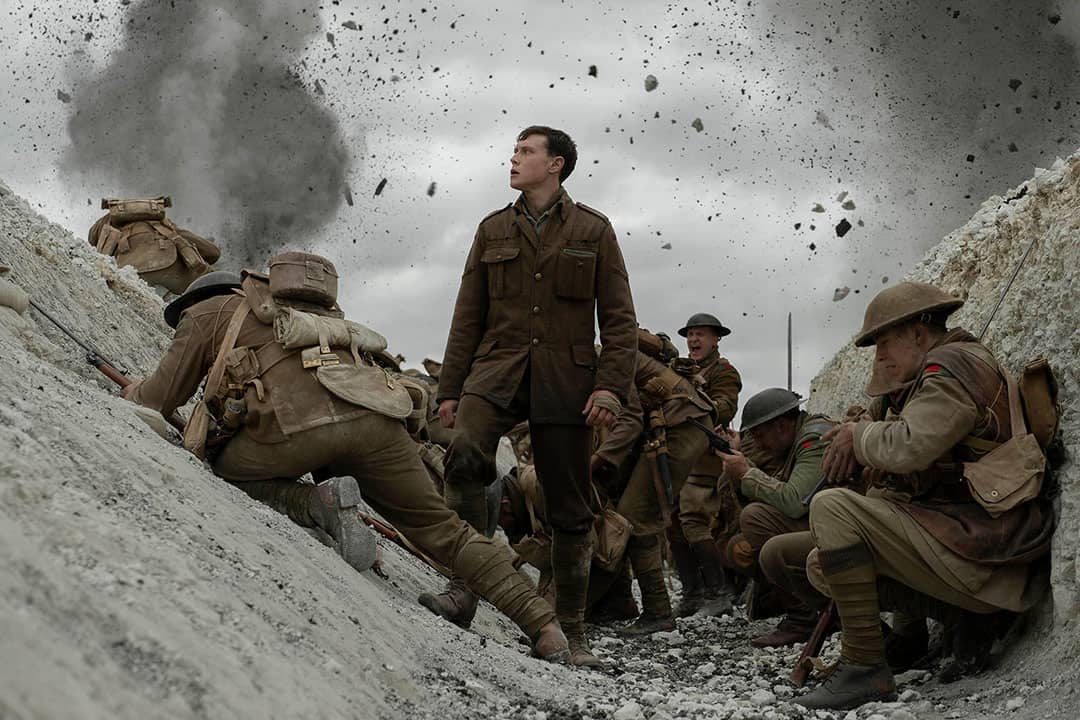Director Sam Mendes’ 1917, out this holiday season, is one of the final major awards season releases before the new decade begins.
A World War I thriller, it centres on two young British soldiers, Blake and Schofield, who are tasked with delivering an urgent message to a distant battalion of soldiers. The lives of these men hinge on their dangerous trek through contested territory that’s filled with dark tunnels, lethal traps, and the constant threat of attack.
The underrepresented wartime period setting and the attachment of Mendes — a critically acclaimed director who has a proven understanding of balancing tense action and emotional intrigue, notably with 2012’s Skyfall — might be enough to court interest. However, the real draw of 1917 is its technical flare.
The film is framed as a single, continuous shot. There are no overt cuts, and the soldiers’ harrowing mission plays out in real time for the majority of the film. The film’s cinematography comes from the masterful Roger Deakins — following a long-overdue first Academy Award win for 2017’s Blade Runner 2049 — and might be his crowning achievement to date.
Watching the mission unfold in real time is a powerful, emotional, and extremely immersive experience. There is no disconnect between the time passing for the viewer and the characters on screen, so we are painfully aware of every lost second and know their progress the whole time. By the end, the impact of the distance the characters have travelled is tangible and extremely impressive.
The single-take effect is a spectacular achievement, but what’s really special about 1917’s camerawork is how the rest of the film works so well around it — something that, in lesser hands, could have been a major impediment. Instead, the camera is an intuitive guide to the eye, pushing you to look in certain places and planting setups and payoffs with great subtlety.
1917 relies heavily on staging of the camera, actors, and elements of the set because it does not have the luxury of cutting angles to manipulate the viewer’s attention. Rather, scenes are built in brilliant ways that allow the camera to change angle, target, location, and composition, simply by the way people move and how the sets are constructed.
I cannot emphasize enough the excellence of the camerawork; every movement feels deliberate and flawless, and becomes more and more impressive as the film progresses. Deakins is fantastic at creating beautifully composed shots, and the fact that he was able to so smoothly maintain this over ridiculously long takes genuinely floored me.
Another area of particular note is the production design. The film is a non-stop journey: traversing trenches, battlegrounds laden with corpses and muddy craters, ravaged homes, and wide fields. All are recreated with a rich attention to detail, especially the sequence in no man’s land, which captures the horror and futility of trench warfare.
The only times that 1917 does come up for air are in scenes with cameos from some well-established British actors — Colin Firth, Andrew Scott, Benedict Cumberbatch, and more — as various military characters they meet along the journey. This A-list cast provides moments of welcome reprieve from the otherwise constant high-pressure action.
Alternatively, it also turns every time they leave our leads alone into a drop back into the deep end. However, I only took issue with one of these guest-star sequences: during a strange pause from otherwise ratcheting tension near the end.
The film is quite surface-level, and times where it seemingly does have something to say — largely comments on the meaninglessness of medals in war — disappear past the halfway mark as the plot can no longer fit them in.
While tight and streamlined, this costs the film much of its resonance outside of its outstanding technical elements. Without these moments, which are admittedly intertwined with the plot, 1917 would not be nearly as good as it is. These areas are what define and elevate it.
1917 is a movie to marvel at for the way that almost every element is so finely tuned and well executed. This is entirely due to Sam Mendes, Roger Deakins, and everyone else involved behind the scenes, who turn wartime drama and horror into a gripping triumph that demands to be seen on the largest screen possible.
1917 will release in select theatres December 25, and nationwide January 10.


